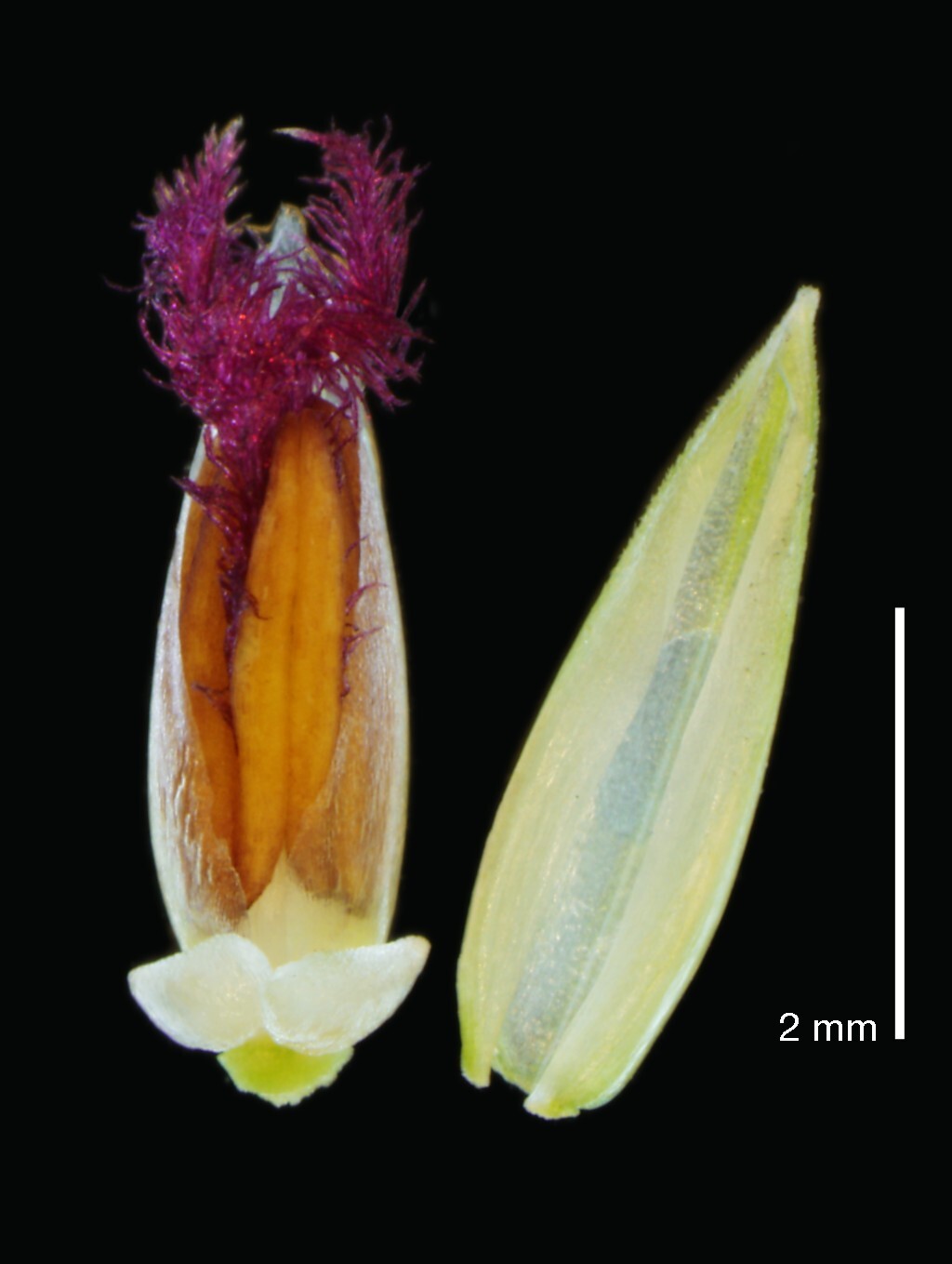Stenotaphrum secundatum
(Walter) Kuntze Buffalo GrassRhizomatous and stoloniferous perennial, usually prostrate but occasionally weakly ascending. Culms to 40 cm high. Leaves glabrous; blade flat or broadly channelled, obtuse, to 18 cm long and 12 mm wide; sheath strongly compressed; ligule 0.5–1 mm long. Inflorescence a one-sided spike-like panicle, 5–10 cm long; spikelets sub-sessile, in four rows, those of the inner 2 rows embedded in the flattened axis and the outer rows on short (to c. 6 mm), closely appressed branches terminating in an awn-like tip. Spikelets lanceolate, 4–5 mm long; lower glume truncate, 1–2 mm long, membranous; upper glume 9-nerved, as long as spikelet, papery; lower floret staminate, its lemma equal to upper glume but firmer, palea subequal to lemma; upper floret resembling lower but bisexual. Flowers Dec.–Feb.
MuM, Wim, GleP, Brid, VVP, VRiv, RobP, MuF, GipP, OtP, WaP, Gold, CVU, GGr, DunT, NIS, EGL, WPro, HSF, OtR, Strz. Naturalized in all States. Native to tropical and warm-temperate areas of North and South America and Africa. Widely planted as a tough, hardy lawn grass and naturalised along roadsides, stream verges and near-coastal areas, particularly on lowland sandy soils.
Numerous cultivars with ranges of tolerance of drought, shade and with varying levels of toughness of the foliage have been developed in recent years, particularly with the growth of the 'instant lawn' industry.
Walsh, N.G. (1994). Poaceae. In: Walsh, N.G.; Entwisle, T.J., Flora of Victoria Vol. 2, Ferns and Allied Plants, Conifers and Monocotyledons, pp. 356–627. Inkata Press, Melbourne.
 Spinning
Spinning



